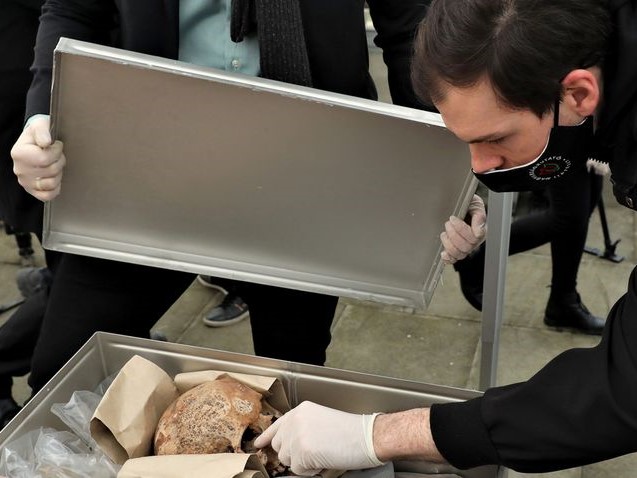Bones of House of Árpád kings identified by summer
The analysis of the bones of the eight royal dynasties in the Székesfehérvár ossuary is expected to be completed by the end of next year, Gábor Horváth-Lugossy told daily newspaper, Magyar Nemzet.
The Director General of the Institute of Hungarian Research also mentioned that after the release of a scientific publication, the general public will also learn which two persons of the Árpád dynasty have been most recently identified. "Thanks to the most modern molecular technology currently available in the world, the laboratory of the Research Centre for Archaeogenetics of the Institute of Hungarian Research can read the complete genetic sequence of even 2000-year-old bone remains. This means that not only the Y-chromosome and mitochondria can be examined, but also the sequence order of any chromosome in the body, enabling the accurate mapping of family relationships."
- the Director General of the Institute of Hungarian Research told Magyar Nemzet in connection with the research on the remains of Hungarian monarchs buried in the former royal tombs in Székesfehérvár.
Gábor Horváth-Lugossy explained that the remains of about nine hundred people excavated in Székesfehérvár were buried in conditions similar to mass graves after the Turkish wars and the destruction of the Coronation Basilica.
“The first attempt to sort them out was in 1999 by anthropological examination, trying to determine whether the bones belonged to men or women on the basis of human characteristics. Now these remains are in bags in airtight containers.” he added.
The Director General emphasised that, unlike anthropology, archaeogenetics can determine, bone by bone, whether or not it belongs to the same person. “Since the genetic lineage of Béla III was already established in 2017 by Miklós Kásler, the Minister of Human Capacities - then Director General of the National Institute of Oncology - and his fellow researchers, it is possible to identify the kings of the Árpád dynasty and their family members. Gábor Horváth-Lugossy also said that members of eight ruling dynasties - including the Jagellos, Albert Habsburg, János Szapolyai, Károly Róbert and Mátyás Hunyadi - were buried in the Coronation Basilica in Székesfehérvár, and it is possible that among the two hundred and four complete skeletons already identified, there is also that of Louis the Great.
“In order to shed light on this as soon as possible, Italy and Poland have already been contacted for the foreign investigations needed to identify the remains. In 2021, with the assistance of Croatia, the genetic lineage of the Hunyadi family was also traced and established” he added.

The Director General explained that it takes between three and six months to identify a single bone, so it is expected that all the tests will be completed by the end of next year. As for the most recently identified bones of the kings of the Árpád dynasty, Gábor Horváth-Lugossy underlined that the results of a scientific research should always be published in an international journal first, and once this is done, the results become of scientific value. He said that the editors submit the material for blind peer review before publication. Peer reviewers are responsible for reviewing and approving the scientific process, the methods used and the conclusions.
Therefore, it is likely to be published in Hungary at the beginning of the summer, who of our kings have been identified so far - highlighted the Director General, adding that the Institute of Hungarian Research has published six archaeogenetic publications so far, all of which have been acknowledged by the scientific community, despite leftist attacks.
Read the full interview about the findings of the research on the Székesfehérvár Ossuary on the website Magyar Nemzet.